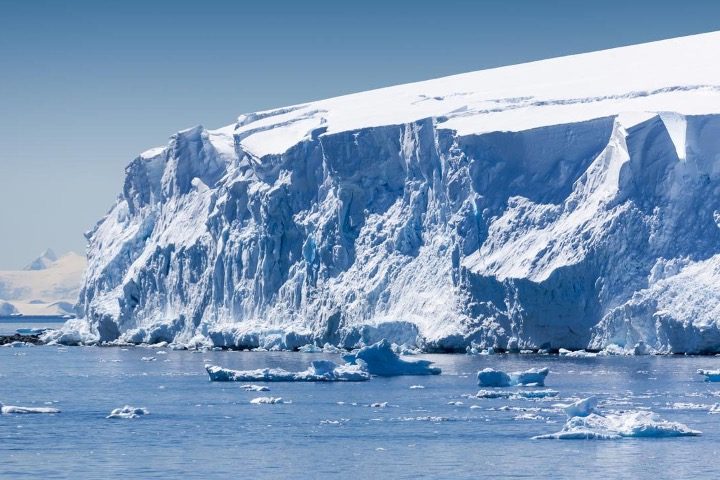
An absurd geoengineering project involving placing a 62-mile curtain in front of an Antarctic glacier to stop warm-water currents from melting it is being proposed by scientists. The scientists are looking for $50 billion from the 29 nations who are signatories to the Antarctic Treaty, signed in 1959. The United States is an original signatory to the treaty, which states that “Antarctica shall be used for peaceful purposes only.”
The glacier in question is known as Thwaites Glacier, a Great Britain-sized hunk of ice located in western Antarctica. It has been nicknamed the “Doomsday Glacier” by climate zealots because it can be subject to warmer ocean currents. Climate alarmists claim that climate change, brought on by human emissions of greenhouse gases, is responsible for disrupting what they call “traditional ice thickening and thinning cycles” of the glacier.
Climate zealots worry that if the “Doomsday Glacier” collapses, it could lead to a global sea-level rise of up to 10 feet. The same zealots tell us that a sea-level rise of just two feet would be catastrophic for coastal cities such as Miami, New Orleans, and New York.
The glacier curtain is the brainchild of John Moore, a glaciologist from the University of Lapland in Finland.
According to Moore, his main issue is this: “Earth’s two large ice sheets in Antarctica and Greenland will deteriorate under all scenarios of climate change projected for the future. This deterioration has already begun for both Antarctica and Greenland and is causing an ever-accelerating pace of sea-level rise that will persist into the coming centuries regardless of how optimistically humanity can shift away from carbon-based energy systems.”
Hence the gigantic curtain, which Moore and his colleagues hope to anchor on the Amundsen Sea floor in an effort to block warmer ocean currents from reaching Thwaites Glacier.
Initially, Moore envisioned a wall to keep the currents from reaching the glacier, but settled on a curtain as a more reasonable approach. “Any intervention should be something that you can revert if you have second thoughts,” Moore explained.
The curtain idea is only in the early testing stages. Moore’s colleagues at Cambridge University are currently testing a three-foot-long version of the technology on the River Cam. If all goes well, researchers hope to test a 33-foot-long curtain in a Norwegian fjord in a couple of years.
“We want to know, what could possibly go wrong? And if there’s no solution for it, then in the end, you just have to give up,” Moore explained. “But there’s also a lot of incentive to try and make it work.”
Fifty billion incentives, to be precise.
“It sounds like a hell of a lot,” Moore said in defense of the high price tag. “But compare the risk-risk: the cost of sea-level protection around the world, just coastal defenses, is expected to be about $50 billion per year per meter of sea level rise.”
Like clockwork, Moore brought up United Nations talking points in his pitch for the project.
“One of the great driving forces for us is this social-justice point — that it’s a much more equitable way of dealing with sea-level rise than just saying, ‘We should be spending this money on adaptation,'” the scientist preached.
Climate realists aren’t quite so sure about the “doomsday” scenario involving the Thwaites Glacier. At website Climate Realism, Dr H. Sterling Burnett of the Heartland Institute suggests that there is “evidence suggesting that anthropogenic climate change has nothing to do with the Thwaites Glacier’s recent melting trend,” and that it is simply a part of the natural tendency of glaciers to expand and retreat, just as they’ve done for millennia.
“In short, the idea that human carbon dioxide emissions are contributing to the Thwaites Glacier’s decline is pure speculation; speculation seemingly refuted by the significant decline in surface temperature where the glacier resides, and the net gain of ice and snow on Antarctica. The Thwaites Glacier is bucking climate trends in West Antarctica and for the continent as a whole, almost surely because of El Nino warmed waters,” Burnett wrote.
The entire concept of geoengineering as a “solution” to climate change is nothing but a money grab by scientific charlatans who prey upon the fear of a nonexistent climate crisis to line their pockets. Whether it’s the spraying of reflective aerosol sulfate material into the atmosphere, dumping chemicals used in the manufacture of drain cleaners into the ocean, or this harebrained giant ice-protecting curtain, it’s all a risky and unnecessary waste of money.




